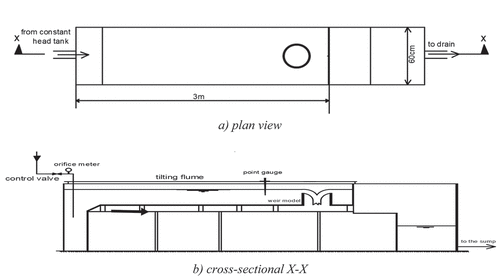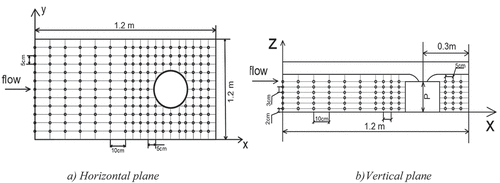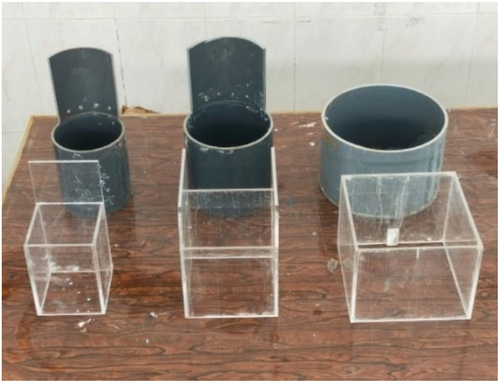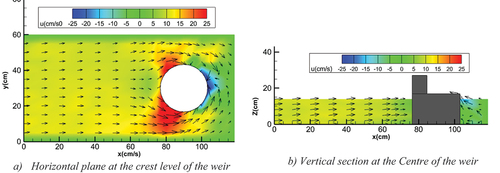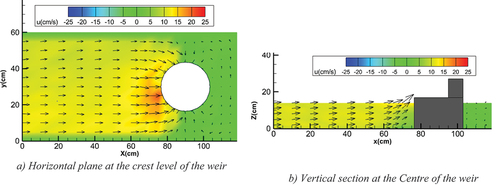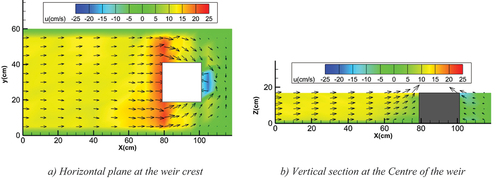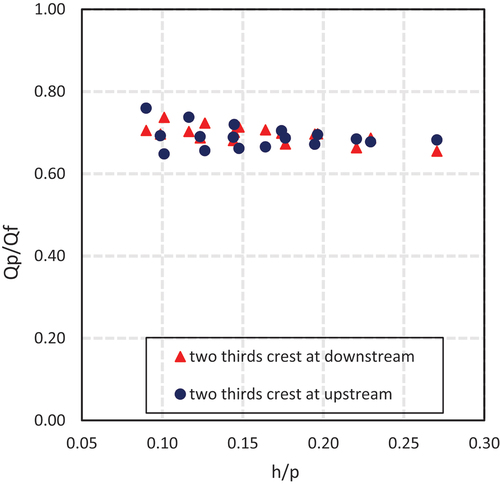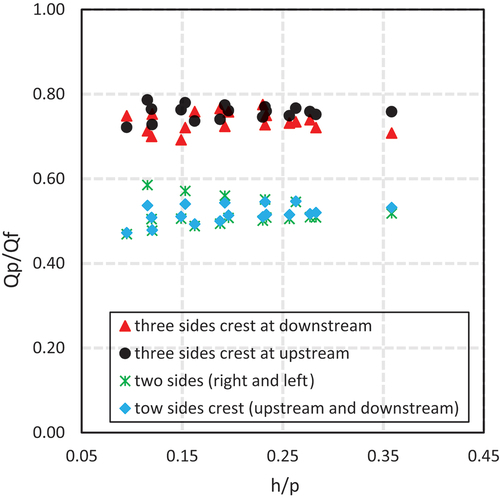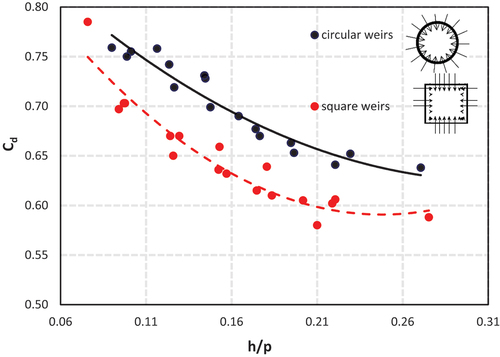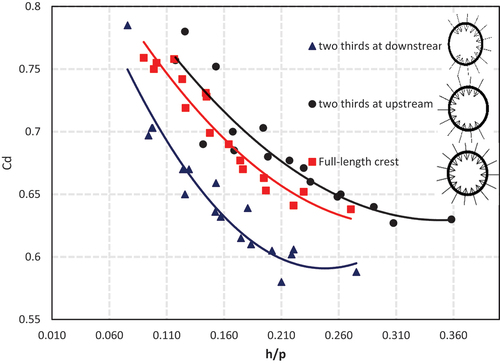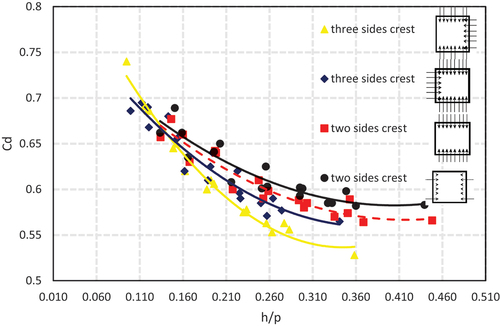Figures & data
Figure 4. A sketch of well weir models used in the present study: a) circular well weir models, b) square well weir models.
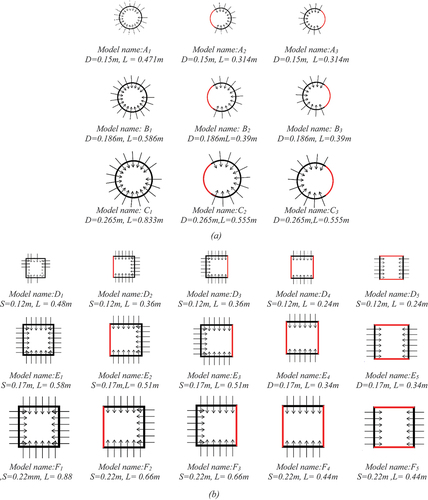
Table 1. Ranges of variables in the present study.
Figure 9. Velocity vectors around a square weir with three-sides crest at downstream for Q = 15.48 L/s.
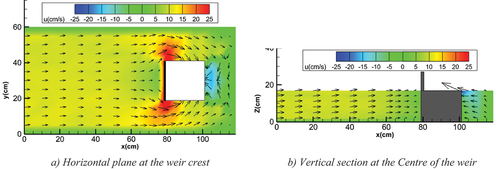
Figure 10. Velocity vectors around a square weir with three-sides crest at upstream for Q = 15.48 L/s.
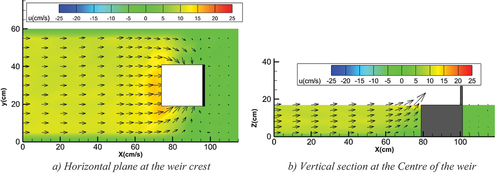
Figure 11. Velocity vectors around a square weir with two sides-crest (right and left) for Q = 15.48 L/s.
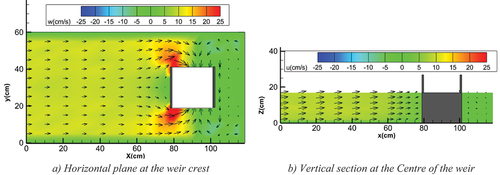
Figure 12. Velocity vectors around a square weir with two-sides crest (upstream and downstream) for Q = 15.48 L/s.
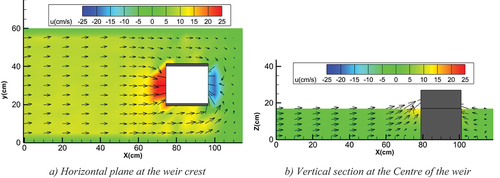
Figure 13. Variation of Q with h/p for a circular well-escape weirs with a constant diameter (D = 15 cm) and various flow directions.
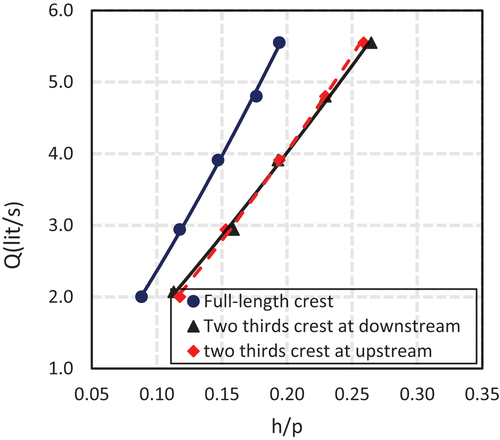
Figure 14. Variation of Q with h/p for a circular well-escape weirs with a constant diameter (D = 18.7 cm) and various flow directions.

Figure 15. Variation of Q with h/p for a circular well-escape weirs with a constant diameter (D = 26.5 cm) and various flow directions.
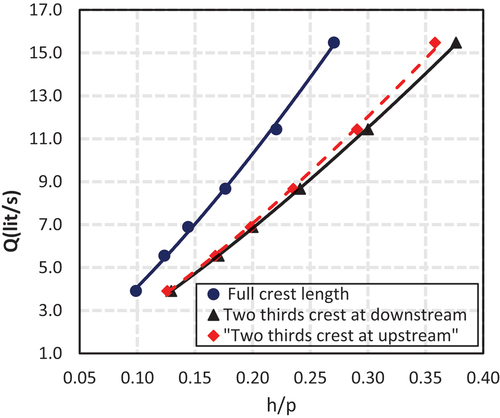
Figure 16. Variation of Q with h/p for a square well-escape weirs with a constant side length (S = 12 cm) and various flow directions.
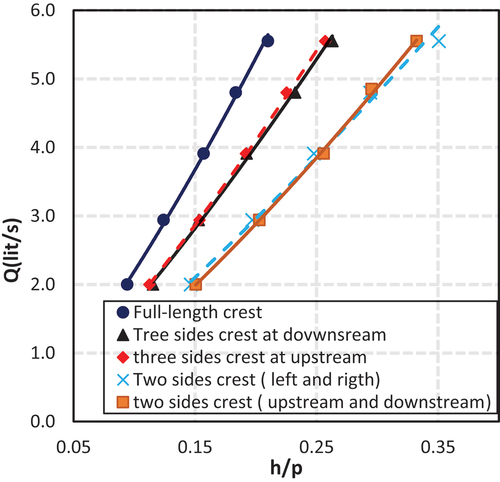
Figure 17. Variation of Q with h/p for a square well-escape weirs with a constant side length (S = 17 cm) and various flow directions.
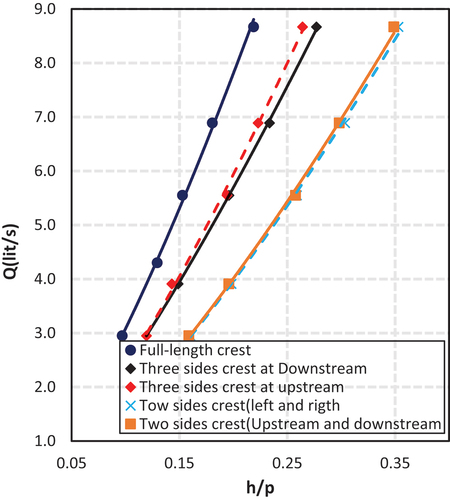
Figure 18. Variation of Q with h/p for a square well-escape weirs with a constant side length (S = 26.5 cm) and various flow directions.
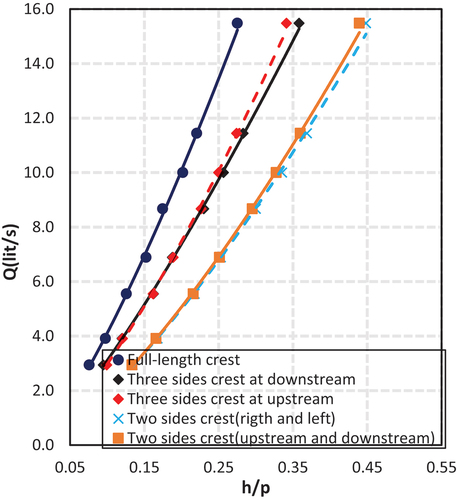
Figure 19. Variation of q with h/p for circular and square well-escape weirs of constant weir height and flow along the total length of crest perimeter.
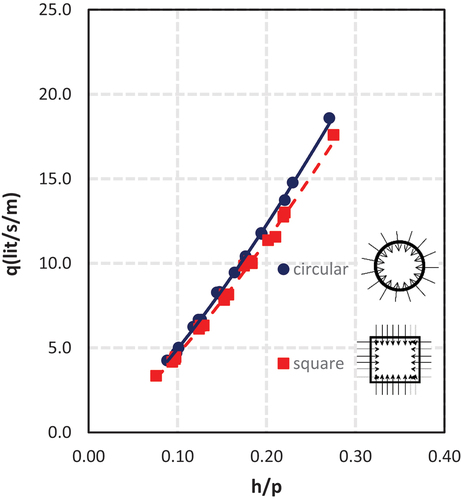
Figure 20. Variation of q with h/p for circular and square well-escape weirs of constant weir height and flow from downstream.
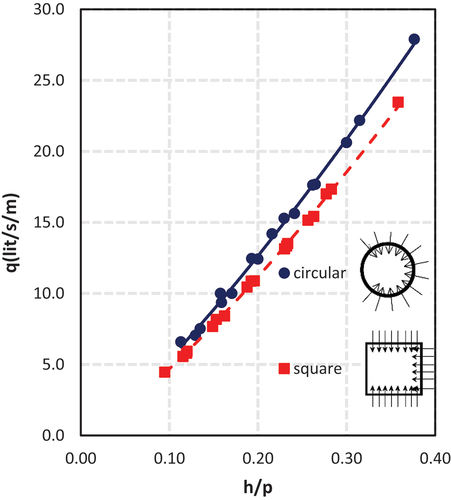
Figure 21. Variation of q with h/p for circular and square well-escape weirs of a constant weir height and flow from upstream.
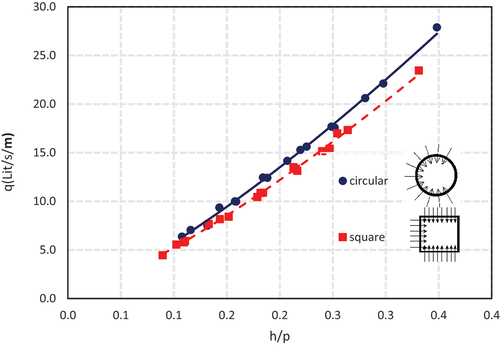
Figure 22. The variation of the relative increase in circular weir’s discharge capacity over that of square weir with h/p.
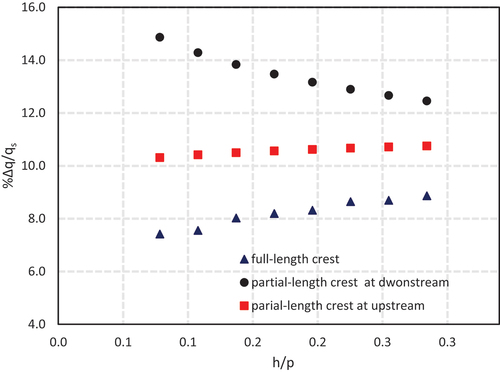
Figure 23. The variation of relative difference in the discharge capacity between the weirs of full-length crest and partial-length crest.
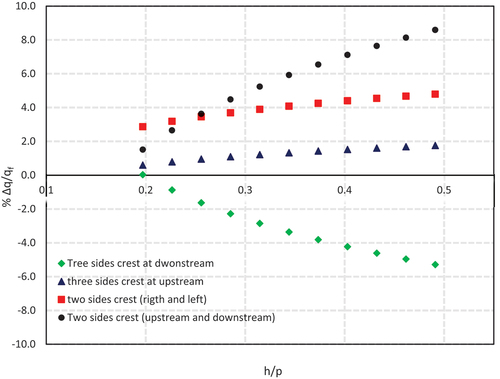
Figure 27. Variation of Cd with h/p for circular and square weirs with partial crest length from downstream.
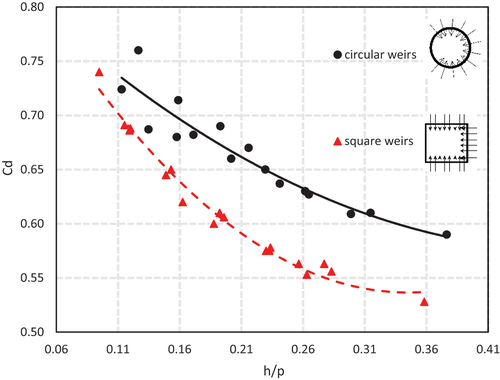
Figure 28. Variation of Cd with h/p for circular and square weirs with partial crest length from upstream.
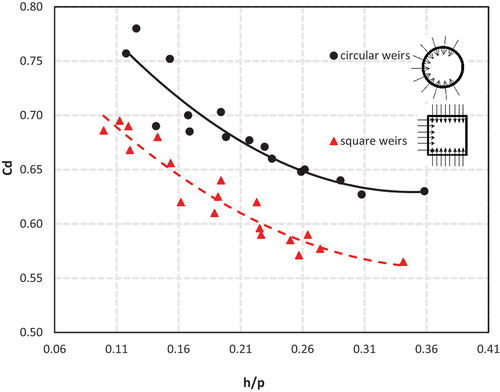
Table 2. Comparison of the average discharge coefficient of circular and square weirs with different flow directions.


